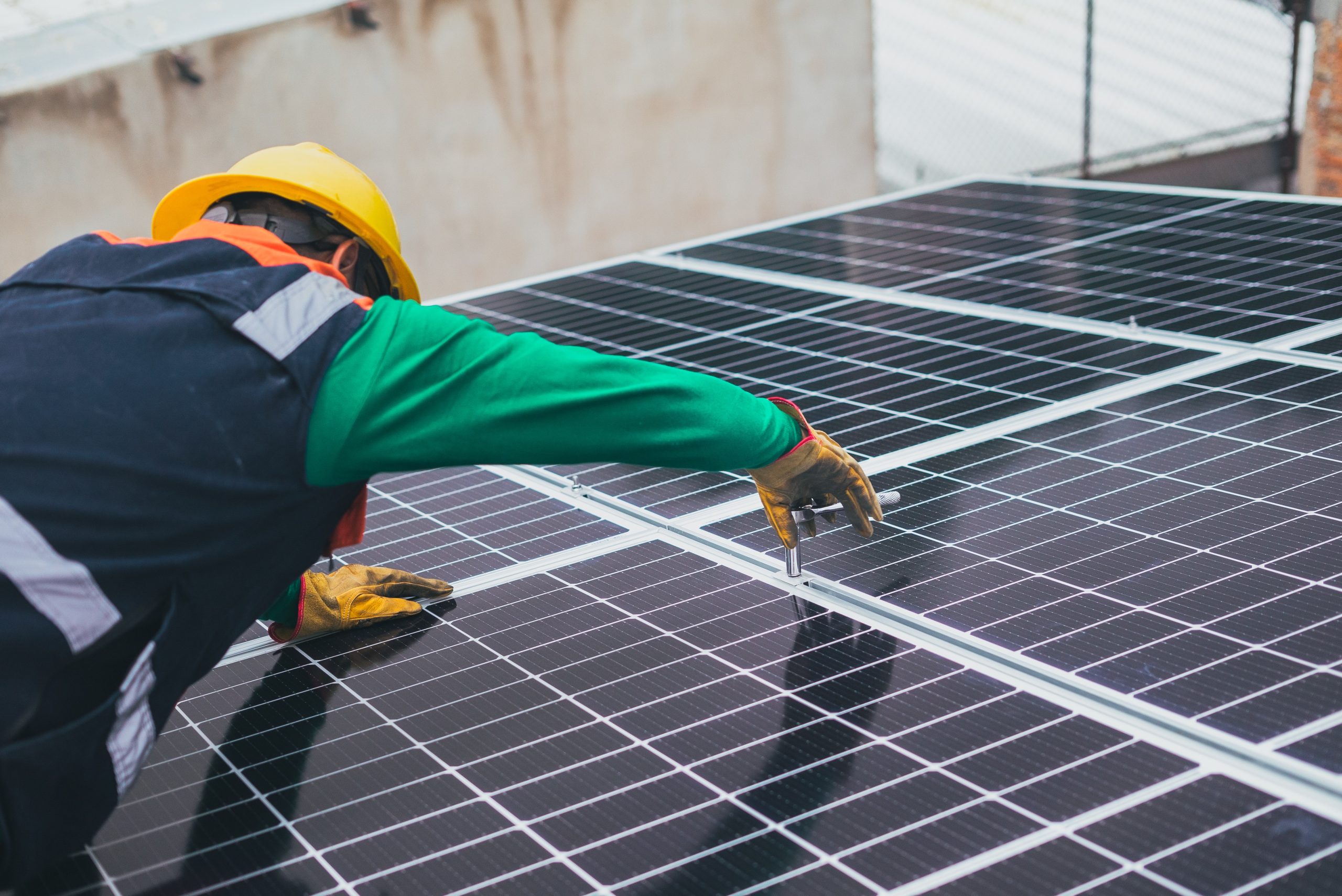
Commonplace pitfalls witnessed during delivery of Solar PV SSEG projects
The renewable energy Solar PV Small Scale Embedded Generator (SSEG) Commercial and Industrial
(C&I) sector is probably one of the busiest sectors of business in South Africa right now. It is a flurry
of projects being developed and executed, supported by many programmes, incentives, and
investment opportunities.
At the same time, the C&I sector is very quickly developing into a mature and established market,
with bodies and associations, representatives and regulators all playing vital and pivotal roles to
make this happen. Accordingly, there are continually new entrants, execution partners and vested
stakeholders equipping and positioning themselves to enter and serve the industry in some or other
capacity.
“With continued technology improvements, developments and changes, there is space for everyone in this industry.”
With continued technology improvements, developments, and changes, there is a space for
everyone in this industry. Be it residential, rooftop, ground-mount, C&I, there are many areas within
which an entrant can establish itself. The barriers to market entry for new players are relatively low
and easily met, so in just a few years the sector has fast become a very competitive and saturated
space.
The points reflected upon here are from the perspective of experiences as a consultant to many
Solar PV SSEG projects, and this blog briefly discusses some of the commonly encountered
frustrations and pitfalls experienced by project owners during the execution of an SSEG project.
It is hoped that an awareness of some of the topics herein may help a prospective or interested Solar
PV project owner to look out for some pitfalls and to put measures in place to ensure the successful
and proficient delivery of his/her Solar PV project.
How do you select your Solar PV execution partner?
With such a saturated market, how does one select and engage an installer for your project? Many
installers appear similar in fit and form, many even seem to have the same sales line, so how does
one look for a suitable partner?
During early market establishment, early out-of-the-block installers and execution partners would
have undertaken the whole scope of a Solar PV installation, creating and pioneering their way to
execute and deliver on projects. As the market has matured and established itself, ever so more are
Solar PV projects being executed by entities that are solely and uniquely defined as being either
turnkey EPCs, installers, assemblers, testers, or electricians only. Today there are many more parties
contracted to deliver on a project, with smaller ring-fenced scopes of work being identified within
the project. Projects will today even differentiate between and contract out separately the DC and
AC installation works as an example. The roles have become quite niche and focussed.
“It has become the exception that one finds an all-in-one, all-inhouse multiskilled construction partner these days.”
This is really driven by the pressures and demands of a fast-moving market, tighter timelines,
reduced margins, the demands for efficiency during delivery, and the plethora of entrants trying to
penetrate the market. It has become the exception that one finds an all-in-one, all-inhouse
multiskilled construction partner these days.
These SSEG projects are brought together and contracted through many layers of multi-level &
cross-functional sub-contracting and carefully ring-fenced scopes of work. The commercial benefits
of carving out separate scopes of work are multi-fold, but so too can be the risks and pitfalls when it
comes to delivering on the scope of works during execution.
Quality assurance amiss
It is rare that I attend and review a project construction site where I have been fully assured of a
proper level of Quality Assurance having been undertaken by the primary contractor and his/her
subcontractors during the project lifecycle. Often the accountability and the expectations for
delivering on quality to the client by all stakeholders has evidently been lost amongst all the parties
concerned and the layers of sub-contracting.
Often too, a new market entrant contractor does not yet know what it should be expecting and
demanding from his sub-contractors as a final build quality, or what constitutes a complete and
comprehensive handover of deliverables from its sub-contractors. Processes are often not yet
mature enough and some coaching may be required to address concerns and raise awareness.
“Make sure that the contractors who you are considering… have the necessary accreditations and that all downstream contractors are also accredited…”
There are exemplary EPC contractors in the market that deliver best-in-class and there are EPC’s
that have industry certifications and paperwork to boot, but there are also entrants grappling with
the execution given the commercial pressures that can result in tardiness during the execution.
Often, entrant contractors are not aware of their obligations, and because of poor oversight and
supervision by the primary contractor, the project too can end up with a sub-par and under-delivery
on quality of works. Make sure that the contractors who you are considering appointing to execute
the work have the necessary accreditations, and that similarly, all downstream subcontractors are
also accredited and have been correctly trained.
It gets even more complicated when projects are executed remotely, are out of town, out of the
arms-length reach of the engineering or project management office and where the costs and
impracticalities to get to a site make supervision difficult.
Small mistakes, major impact
While Solar PV is no longer “rocket science”, it is in the execution of these projects that there can be
crucial smaller and finer points that if not correctly addressed, can manifest as problems in years to
come when the harsh installation environment has taken its toll. Poor-quality components or poor
installation works can start to fail long after the EPC has finished up on-site and there is no longer a
recourse available to a Defects Liability to address failures.
Remember, that a PV plant must be built to survive a 30-year design life in some of the harshest
equipment environments, that of temperature, irradiation, cyclic thermal and electrical stresses,
mechanical movement, and vibration – it must be built right. Many installers have also not “been
back onto an old site” to see how their plant and equipment has aged over time, many have only
ever seen or worked on newly completed and constructed plant.
Quality Assurance is not just about demonstrating that plant and equipment being constructed
today is properly constructed. Consider that if the project has been funded (for example in a PPA
arrangement), that it is seldom that a PPA asset does not undergo some change of ownership during
the lifetime of the asset. When interested investors in the future also wish to undertake their own
due diligence of an asset, they too will be keenly interested and attentive to QA having been
demonstrated during the execution of the project.
“But there is no time for that!?”
Heard too often, no QA process should ever be seen as an onerous or futile overhead. The value of a
fit for purpose and tailored QA process with a few key indicators and performance metrics that seek
to assure and demonstrate to the owner that the contractor(s) have implemented and constructed
in line with industry best practice should never be underestimated. The little bit of time allocated
during execution can save a lot of cost and effort, as having to remobilise to site and to get labour
and equipment back onto the site, to attend to remedial work will be a heavy cost.
“We can attend to that in O&M…”
This too often comes up in conversation, but one should never allow an outstanding construction
item or scope of works to be carried over to be addressed in an O&M contract or activities. Often
there are outstanding works or deliverables and scope that contractors will motivate to delay or
carry over to an O&M contract. This is poor practice as it delays effective start-up and
commencement of O&M, skews cost benchmarks, and blurs lines of responsibilities during handover activities.
Be wary of outliers
Margins have been eroded by a very competitive market. Primary contractors pass the responsibility
for poorly delivered works to their sub-contractors holding them accountable with back-to-back
contracting. This though does not solve all project difficulties, and sometimes in a worst-case one
can still encounter failed projects with disappointed clients looking to save their now “rescue
project”.
Make sure that you understand the market pricing benchmarks and their context, that your project
is correctly priced and be weary of a project or proposal that is a cheap outlier.
Mitigating actions
Owners, protect yourself and your asset. Assess your project, assess how your project will be
contracted and structured, all the layers of sub-contracting, and assess the capabilities and
competencies of your installation contractors. Ensure that you have someone to take care of the
interests of and can report with a duty of care to the project owner, or project SPV.
Make sure you are fully satisfied that the project will deliver on H&S requirements, that there is an
Execution Plan, Quality Plan, and sound contracting has been put in place.
Do not forget about responsibilities for insurance cover required during and after installation and
exactly when these insurances commence and terminate.
Before it’s too late
Too often, a project owner believes they can bolt on a Professional Engineer at the tail end of a
project to assist with “sign-off” activities, this with only a quick visit to site but without any prior
involvement or input into the project during early life cycle stages. This can result in awkward tussles
at the end of the project, with misaligned requirements and expectations between contractors and
engineers trying to bring a project across the finish line in accordance with safety, quality, and
compliance obligations.
The sooner in the project lifecycle you can incorporate an engineering review, the easier it is to
remedy and realise corrective changes, possibly saving massive expenses having to implement
disruptive remedies at the closing tail end of a project.
Finally
A little bit of attention to assessing your project execution partners, the contracting relationships for
the project, quality assurance during the design and project execution might save the project a lot of
time and cost in the future. If the above does not happen, the project team might need to go back to
the site … and that will cost the project time and labour.
Make sure your project delivers and reports regularly on quality assurance aspects from early on in
the project lifecycle. A constructed project should have a supporting paper trail that evidences what
has progressed on-site and a QA responsible person on-site who can attest to the contents of that
reporting.
A project may be small, yet complex; or large, but repetitive – appoint an appropriate supervisory
role per the needs, complexities, location, and risks of your project.
Whether you are balance sheet self-funding your PV project, or whether your project is externally
funded; whether you are taking on much of the project yourself, or you’re fully reliant on partners to
deliver the project for you; if you are uneasy or unsure about aspects of your project, or if you are
needing some sound advice at any stage of your project, do contact us – we would be glad to assist.


